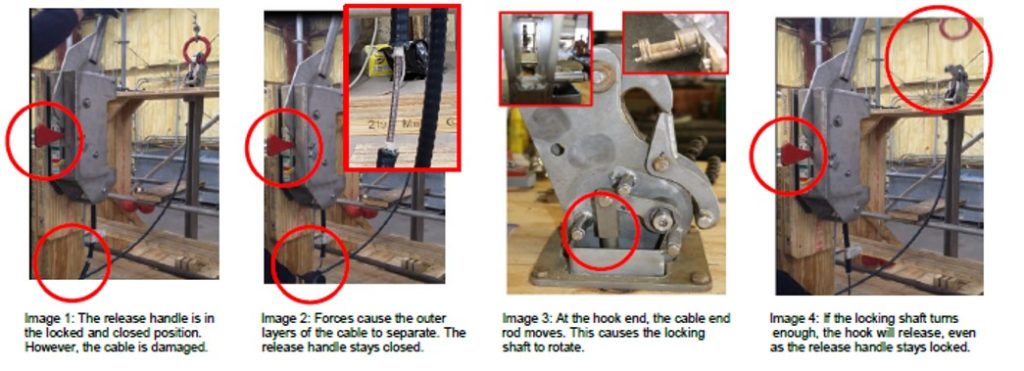US Coast Guard: Damaged control cables can contribute to unintended opening of a hook
What happened?
The United States Coast Guard (USCG) has released Safety Alert 03-20 relating to the importance of checking the integrity of lifeboat control cabling. The Safety Alert addresses the importance of checking for and replacing damaged control cables that operate between the release handle and hook in a lifeboat hook release system.
What were the causes? What went wrong?
The Coast Guard investigated a casualty involving the unintended on-load release of a lifeboat hook from a davit fall wire. Prior to the incident, damage was noted to a control cable between the release handle and one of the hooks. However, the damaged cable remained in service. The damage may have subsequently worsened over time and contributed to the unintentional release.
Members can see the full Safety Alert here.

The U.S Coast Guard strongly recommends that “lifeboat owners, manufacturers, operators and service providers:
- Conduct thorough inspections of control cables between the release handle station and release hooks, as well as any other similar cables communicating between the release station and the hydrostatic interlock, if installed, looking for current damage and for potential hazards or other conditions that might compromise the cables in the future;
- Replace cables that show signs of wear or damage to any layers;
- Implement an inspection regime that allows for cable damage to be identified and, as necessary, for cables to be replaced in a timely manner;
- Consult the lifeboat and release mechanism’s operations manual prior to conducting launch and recovery drills. It is important to remember that safety pins can be used during drills to prevent the hook-locking shaft from rotating, when they are approved as part of the release mechanism. Although safety pins may provide an extra level of safety during drills and training, operators should ensure that lifeboats are stowed in the “ready to launch” condition without safety pins in place. Ensure that lifeboat crews understand that safety pins will prevent a lifeboat from releasing from the fall wires during a real emergency if they are not removed after routine training evolutions or maintenance.
Marine inspectors, investigators, surveyors and servicing technicians are encouraged to maintain an acute awareness to these issues and initiate corrective actions as needed.”
Safety Event
Published: 28 September 2020
Download: IMCA SF 28/20
IMCA Safety Flashes
Submit a Report
IMCA Safety Flashes summarise key safety matters and incidents, allowing lessons to be more easily learnt for the benefit of all. The effectiveness of the IMCA Safety Flash system depends on Members sharing information and so avoiding repeat incidents. Please consider adding safetyreports@imca-int.com to your internal distribution list for safety alerts or manually submitting information on incidents you consider may be relevant. All information is anonymised or sanitised, as appropriate.
IMCA’s store terms and conditions (https://www.imca-int.com/legal-notices/terms/) apply to all downloads from IMCA’s website, including this document.
IMCA makes every effort to ensure the accuracy and reliability of the data contained in the documents it publishes, but IMCA shall not be liable for any guidance and/or recommendation and/or statement herein contained. The information contained in this document does not fulfil or replace any individual’s or Member's legal, regulatory or other duties or obligations in respect of their operations. Individuals and Members remain solely responsible for the safe, lawful and proper conduct of their operations.
